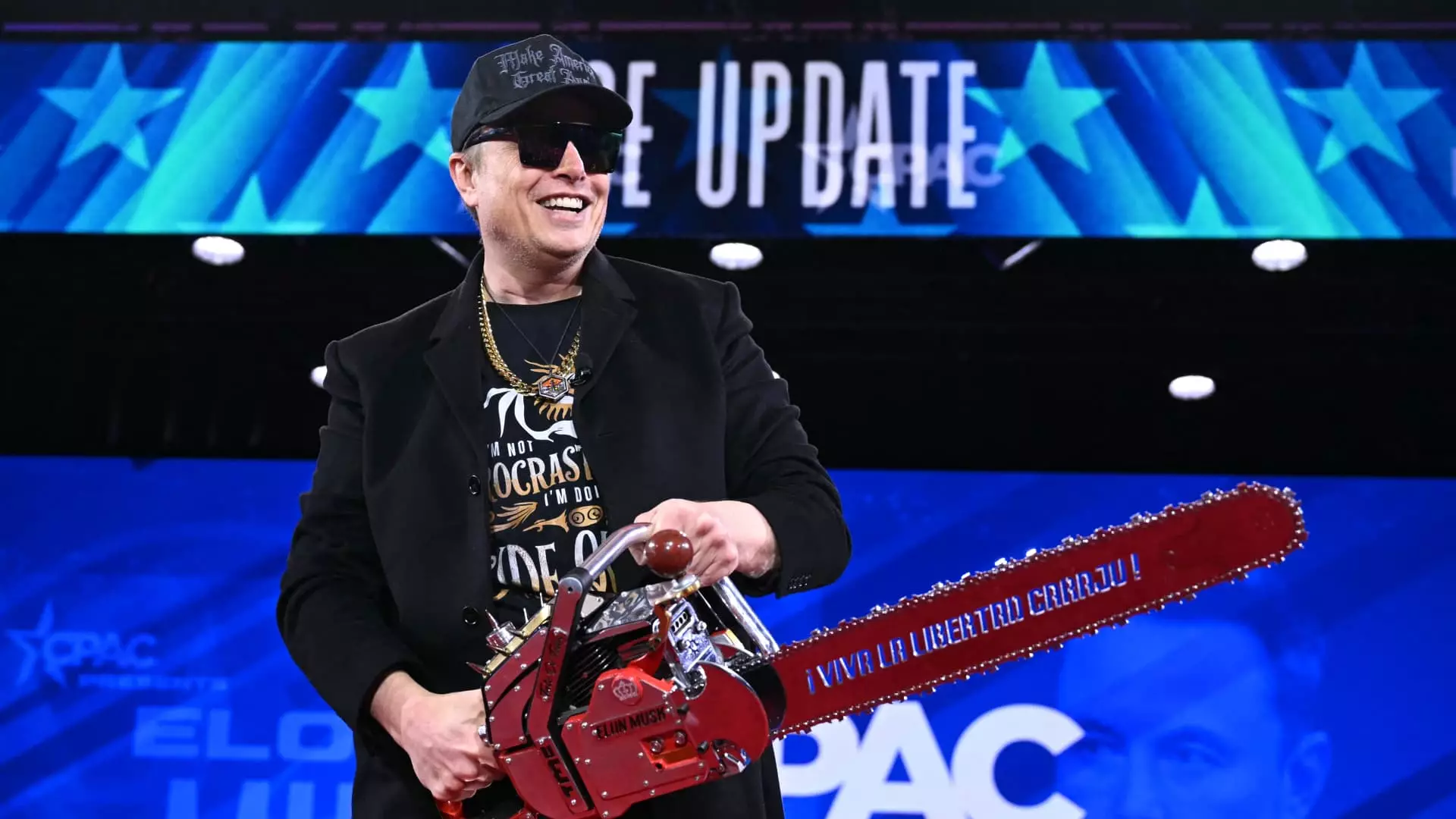In the wake of an unprecedented push to streamline the federal workforce, the Trump administration’s Department of Government Efficiency has initiated a dramatic reduction in federal jobs. Reports indicate that terminations could swell into the hundreds of thousands, an event that may soon stand as the most extensive layoff in American history. While the administration touts efficiency and reduction of government size as positive outcomes, the ensuing chaos in the unemployment benefits system paints a far less rosy picture. This situation is poised to burden an already fragile safety net, pushing many vulnerable workers toward financial despair.
As the news of over 62,000 federally employed individuals losing their jobs hits the airwaves, existing unemployment programs seem woefully underprepared to cope with the looming avalanche of requests. The Unemployment Compensation for Federal Employees (UCFE) program, an antiquated mechanism for delivering benefits to federal workers, is alarmingly ill-equipped for such a surge. Reports from the Century Foundation, a progressive think tank, indicate that the system is “creaky” and “rarely utilized,” suggesting a lack of familiarity even among those who may be desperate to seek aid through it.
Delays and Pain: The Human Cost of Bureaucratic Inefficiency
The gravity of the situation escalates when experts like Andrew Stettner, a former director at the U.S. Labor Department, warn that delays in processing these claims are not just likely but almost certain. Many federal workers, who relied on consistent paychecks, are now confronting a precarious financial future as they struggle to navigate an uncertain job market during an economic downturn. The prolonged wait for unemployment benefits could exacerbate their plight, leading to severe credit issues, depleted savings, and further suffering.
Many workers are already experiencing delays; Stettner notes that it’s challenging for former federal employees to retrieve benefits quickly. He likens the current challenge facing the UCFE to the chaotic conditions experienced during the pandemic, though underlining that this situation manifests on a smaller scale. The reality is grim: Families relying on timely assistance may find themselves experiencing hardship just as they search for new employment opportunities.
A System Ill-Equipped for a High Volume of Claims
Unlike the private sector’s more automated unemployment processes, which facilitate a streamlined transition for employees, the UCFE program appears mired in bureaucracy. The manual nature of its operation significantly hampers efficiency, thus increasing wait times for claims processing. When workers seek benefits, their applications undergo a convoluted verification process, requiring additional input from their previous federal agencies before being approved.
Stettner outlines this stark difference, indicating that for private-sector claims, employers provide regular reports to state and federal authorities, substantially reducing the claims processing timeline. In stark contrast, the existing federal program functions with such limited capacity that it could easily find itself overwhelmed. As the number of applicants rises sharply, with estimates suggesting 10 to 20 times the current volume of claimants, the question remains: how prepared is the bureaucracy to handle this avalanche without faltering?
Legal Challenges and the Uncertain Future
Moreover, murky legal waters surround these mass layoffs, with federal judges recently stopping some of the layoffs in their tracks. The ruling suggests that the administration’s desire to streamline by cutting thousands of jobs may not only be untimely but potentially unlawful as well. While the administration has already cut significant numbers, future cuts hang in the balance, awaiting further legal clarification.
The chaotic environment may not just hinder existing federal employees but also dissuade potential hires from entering the federal workforce in the future. As businesses grow increasingly cautious about investing in labor—evidenced through stagnant hiring trends—job seekers face an uphill battle in securing new employment. The economy appears to be in a precarious state, leading many to question the sustainability of existing job centers, especially for those now facing layoffs.
The Economic Ripples of Mass Job Cuts
The impending crisis in unemployment benefits and federal job security is a classic case of unintended consequences. The administration’s efforts appear to prioritize ideological goals over practical realities. Economic upheaval is the fallout of unchecked political ambition when action is taken without a robust consideration of its societal impact. As potential delays pile up and cases of claim disputes arise, the void left by terminated federal employees will weigh heavily not just on them but on the economy at large.
In sum, what might have been a well-meaning attempt to trim the fat in government spending is producing alarming repercussions for many American families. The unfolding situation signals a vivid reminder of the intricate connections between government actions and the lives of the citizens it aims to serve. As we look to the future, the repercussions of this mass layoff endeavor may serve as cautionary tales, underscoring the necessity of finesse when dealing with matters as fundamental as employment and livelihood.

